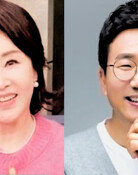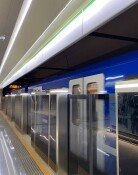CSAT Preparation for Disabled Students
CSAT Preparation for Disabled Students
Posted November. 23, 2005 08:11,
With the national university entrance exam just a day away, Kim Yeon-soon (37), a teacher responsible for college admission at Samyook rehabilitation school began talking to eight students with cerebral palsy and their parents who attended a preliminary gathering for the College Scholastic Ability Test on the Kyeongun School campus in Jongno-gu at 3:00 p.m. yesterday.
The teacher noticed that they looked happy as though they were on a picnic at first, before gradually looking concerned.
Kim took students one by one to test rooms while trying to maintain a smile.
You are going to take the test here tomorrow. Do you like it? Just feel comfortable and act as usual. Bundle up tomorrow so that you dont catch a cold, she said.
She doesnt say anything like, Good luck on your test, or You should do well on your test. She added, Taking the test itself is a big challenge for them.
They will take the test at the school together with 16 other students with cerebral palsy living in Seoul. The Ministry of Education and Human Resources Development ensures that students with the same disability will take the test together at the same school.
A total of nine students will take the university entrance exam at Samyook Rehabilitation School this year. The class for college admission was established three years ago when universities expanded the scope of special admission to include disabled students. Kim said, I decided to take the responsibility for the university admission class because I wanted to give goal of life and hope to students.
The enthusiasm and expectation for the class is higher than expected. In 2002, the first year the special admission was implemented, 15 students took the test and 10 of them succeeded in entering universities. In 2003, nine out of 15, and last year, 2004, all 14 students were admitted to universities.
Like other students attending ordinary high schools, they take regular classes and supplementary classes and participate in voluntary study from 8:00 a.m. to 9:00 p.m. At home, they watch educational broadcasting programs until 2:00 a.m. to 3:00 a.m..
Cho Hyun-ki (21), who will take the test, is the oldest among them. He entered an elementary school at a later age than other students because of his disability. He is a great student when it comes to school performance and school life, befitting his status as the oldest student. He wishes to become a mathematician or a physicist. However, realizing his dream will not be easy. Since there is no science and engineering department at a university that will accept Cho, who has difficulty even reading one page of a book alone, Kim decided to encourage him to apply for humanities departments.
Kim said, Whenever I have to tell students to change departments because of their disability, I feel bad and I feel like I am a liar, since I usually say to students that they can do anything they want.
She said, Universities in Korea still accept only those who are able to adapt themselves to the curriculum and the school environment designed for non-disabled students. Universities are not considerate enough of disabled students.
She added, I feel relieved that it will not be that cold tomorrow so that students do not have to suffer from cold while taking the exam. I hope that the wall against disabled people melts.
Jae-Young Kim jaykim@donga.com







